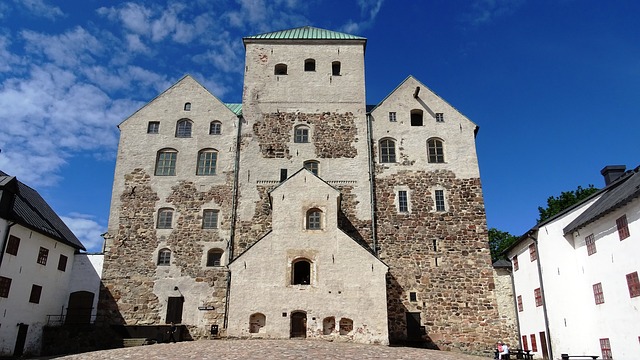The statue of The Little Mermaid: a Danish bronze statue inspired by a fairy tale

In Copenhagen, Denmark, there is a bronze statue based on the story “The Little Mermaid” written by the fairy tale writer Andersen.
It has been a famous tourist attraction in Copenhagen for over 100 years.
On the other hand, it has the unfortunate side of being one of the three most disappointing sights in the world.
In this article, I would like to introduce the statue of The Little Mermaid, which is a must-see for fairy tale lovers.
What is The statue of The Little Mermaid?
The statue of The Little Mermaid stands along a canal a short distance from the center of Copenhagen.
Denmark is also known as the home of Hans Christian Andersen, the writer of fairy tales.
Andersen was the author of many immortal masterpieces such as “The Ugly Duckling” and “The Little Match Girl,” both well-known in Japan.
The statue of The Little Mermaid was inspired by Andersen’s 1837 fairy tale “The Little Mermaid.
In our image of the Little Mermaid, the upper half of her body is human, and the lower half is fish.
The Danish statue, however, has two human legs from the ankles up, while her toes are the tail fins of a fish.
As I will explain later, there is a reason for this.
History of the statue
Sculptor Edvard Eriksen created the statue of The Little Mermaid in 1913.
Carl Jacobsen proposed the idea and commissioned Edvard Eriksen to create the statue.
He was inspired by a ballet play based on Andersen’s “The Little Mermaid” performed at the Royal Danish Theatre at the time.
Carl Jacobsen is also famous as the son of the founder and second president of “Carlsberg.”
Carlsberg is a beer manufacturer for the Danish royal family that is currently loved in about 150 countries worldwide. So many of you may have had a taste of it.
And the woman who is believed to be the model for the statue of the Little Mermaid is Ellen Price.
She was the prima donna of the theater and played the leading role in The Little Mermaid.
Ellen Price was modeled only for the head to complicate things a bit.
From the neck down, a different model was used.

This is said to be because she did not want to appear nude.
The substitute model for the torso was Eline Eriksen, the wife of the statue’s creator, Edvard Eriksen.
There is also a theory that the mermaid in the statue has human legs from the waist to the ankles because Eline Eriksen’s legs were so beautiful that it would have been a shame to cover them with scales and hide them like in the original mermaid.
One of the three most disappointing sights in the world
The Little Mermaid statue is one of Denmark’s most famous tourist attractions because of its beauty and fame.
On the other hand, it is also known as one of the “world’s three most disappointing sights.
In addition to the statue of The Little Mermaid in Denmark, the other nominees for “World’s Three Most Disappointing Places” are the Mara Lion in Singapore and the Pissing Little Boy in Brussels, Belgium.
Why was The statue of The Little Mermaid given such an ignominious title?
Perhaps it is the fact that the statue can be approached at low tide to within direct touching distance, or maybe it is the fact that it is an unfortunate spot that has suffered frequent mishaps, including graffiti, theft of its arms and neck, and in 2003, the blowing up of its pedestal.

Everyone says, “It is smaller than I thought it would be.”
Although the pamphlets and images show a giant cutout of the statue, its actual length is only 125 cm, about the size of a small child.
If you go there expecting a big size like the Statue of Liberty in the U.S., you may be disappointed.
However, the “world’s three biggest disappointments” are only partly intended as a friendly reminder that this is such a familiar and well-known spot.
Conclusion
The statue of The Little Mermaid is a world-famous bronze statue created based on the fairy tale by Danish-born Christian Andersen.
This would be a must-see attraction if you grew up listening to fairy tales as a child.




